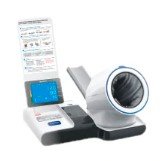State Regulations on Phlebotomy Practices in Cross-Border Telehealth: Variability and Impact on Healthcare Professionals
Summary
- Laws regarding phlebotomy practices in cross-border telehealth vary from state to state in the United States
- Some states have strict Regulations in place, while others have more lenient policies
- It is important for medical professionals to be aware of these differences when providing telehealth services
Introduction
With the increasing use of telehealth services in the United States, it is essential to understand how laws regarding phlebotomy practices in cross-border telehealth vary from state to state. Phlebotomy, the practice of drawing blood for medical testing, plays a crucial role in diagnosing and monitoring various health conditions. Therefore, it is essential to ensure that phlebotomy practices in telehealth settings comply with state Regulations to protect patient safety and confidentiality.
State Regulations on Phlebotomy Practices in Telehealth
Each state in the United States has its own set of laws and Regulations governing phlebotomy practices in healthcare settings, including telehealth. These Regulations can vary significantly from state to state, impacting the way telehealth services are provided across state lines.
Strict States
Some states have strict Regulations in place when it comes to phlebotomy practices in telehealth. These states may require phlebotomists to be licensed or certified, and may have specific guidelines for the collection, handling, and transportation of blood samples. Additionally, strict states may have limitations on the types of tests that can be conducted via telehealth and may require certain protocols to be followed when providing phlebotomy services remotely.
Lenient States
On the other hand, some states have more lenient policies regarding phlebotomy practices in telehealth. These states may have fewer Regulations in place, allowing for more flexibility in how phlebotomy services are provided via telehealth. While lenient states still prioritize patient safety and confidentiality, they may have fewer restrictions on the types of tests that can be conducted remotely and may have less stringent requirements for phlebotomy training and certification.
Challenges for Medical Professionals
Due to the varying laws and Regulations regarding phlebotomy practices in cross-border telehealth, medical professionals face several challenges when providing telehealth services across state lines. Some of the challenges include:
- Understanding and complying with different state Regulations
- Ensuring patient safety and confidentiality are maintained
- Keeping up to date with changes in state laws regarding telehealth
Importance of Compliance
Compliance with state Regulations regarding phlebotomy practices in telehealth is crucial to protect both patients and Healthcare Providers. By following state laws and guidelines, medical professionals can ensure that blood samples are collected, tested, and handled appropriately, reducing the risk of contamination or misdiagnosis. Additionally, compliance with state Regulations helps to protect patient privacy and confidentiality, ensuring that sensitive health information is handled securely and ethically.
Conclusion
In conclusion, laws regarding phlebotomy practices in cross-border telehealth vary from state to state in the United States. Some states have strict Regulations in place, while others have more lenient policies. It is essential for medical professionals to be aware of these differences and to comply with state laws when providing telehealth services. By prioritizing patient safety, confidentiality, and compliance with state Regulations, Healthcare Providers can ensure that phlebotomy practices in telehealth settings meet the highest standards of care.

Disclaimer: The content provided on this blog is for informational purposes only, reflecting the personal opinions and insights of the author(s) on the topics. The information provided should not be used for diagnosing or treating a health problem or disease, and those seeking personal medical advice should consult with a licensed physician. Always seek the advice of your doctor or other qualified health provider regarding a medical condition. Never disregard professional medical advice or delay in seeking it because of something you have read on this website. If you think you may have a medical emergency, call 911 or go to the nearest emergency room immediately. No physician-patient relationship is created by this web site or its use. No contributors to this web site make any representations, express or implied, with respect to the information provided herein or to its use. While we strive to share accurate and up-to-date information, we cannot guarantee the completeness, reliability, or accuracy of the content. The blog may also include links to external websites and resources for the convenience of our readers. Please note that linking to other sites does not imply endorsement of their content, practices, or services by us. Readers should use their discretion and judgment while exploring any external links and resources mentioned on this blog.
